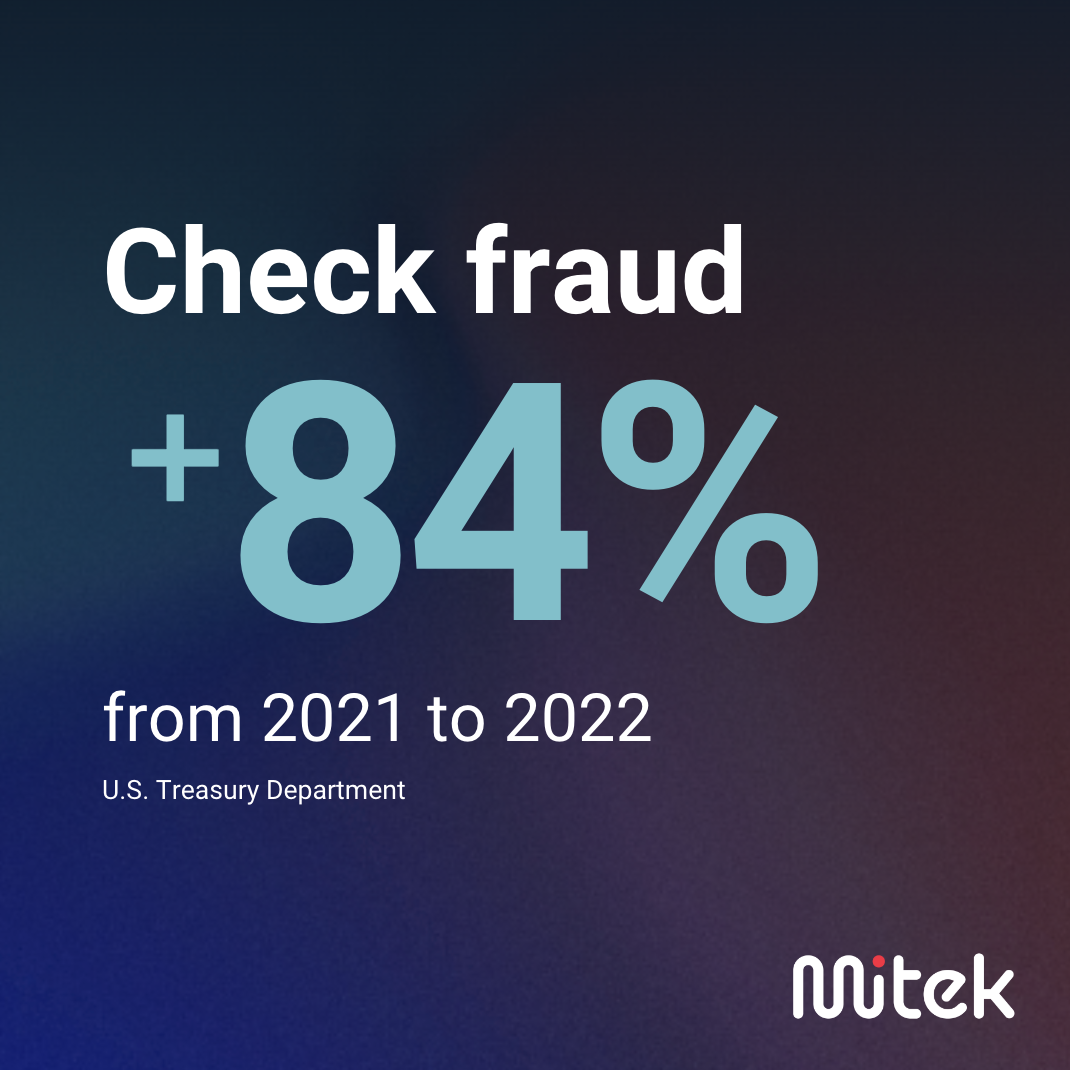 According to the U.S. Treasury Department, reported check fraud rocketed from 250,000 cases in 2021 to 460,000 in 2022 – an 84% increase. That comes despite a volume increase in checks of just 8% in 2021. All of which prompts the question, “why?”.
According to the U.S. Treasury Department, reported check fraud rocketed from 250,000 cases in 2021 to 460,000 in 2022 – an 84% increase. That comes despite a volume increase in checks of just 8% in 2021. All of which prompts the question, “why?”.
Check fraud itself isn't new. But the accessibility of the dark web and encrypted messaging apps acting as online marketplaces for the sale and purchase of stolen check images provides fraudsters with new and highly profitable channels for their illicit trade.
Research from Georgia State University’s Evidence-Based Cybersecurity Research Group found that in the groups they observe, an average of 1,325 stolen checks were sold this way every week in October 2021, up from 409 in August of that year and just 158 per week in October 2020. These figures likely only represent a small fraction of the number of checks being stolen and sold given they focused their work on only 60 online fraud markets.
In February, the Financial Crimes Enforcement Network (FinCEN) issued an alert to financial institutions warning them of a surge nationwide in check fraud schemes targeting the U.S. Mail.
Attempting to gain access to mailed checks, criminals will typically break into a mailbox using master keys that can also be purchased on the dark web. They will then ‘wash’ the checks they obtain using commonly sold cleaning products, erasing the intended payee’s name and the amount displayed on the check and replacing the information with the purchaser’s preferred payee details and a new amount – which could be thousands of dollars higher than the original.
These scanned images of checks are then used for remote deposit, bypassing traditional fraud detection technology which cannot determine between an image of a live check and a picture of a picture of a check.
Learn more about Check Fraud Defender
Check liveness: reducing fraud, reducing costs
To confront these challenges, Mitek has enhanced Check Fraud Defender, arming it with a new feature; check liveness.
Check liveness adds another signal to banks’ defenses, enabling them to determine if a check is a live check or a picture of a picture of one. This additional feature strengthens financial institutions’ ability to counteract different types of check fraud as the sophistication of crimes grows. In a recent test of 2,000 real and fake documents, check liveness showed a 93.3% accuracy rate.
“As check fraud continues to increase in the U.S., financial institutions need to make sure the correct safeguards are in place to protect their organizations and individuals,” said Drew Edwards, CEO, Ingo Money. “With added signals of counterfeit documents, banks of all sizes can stay ahead of criminals to fortify institutional protocols and drastically reduce fraud-related losses.”
Check Fraud Defender reviews 18 check attributes to determine if a document is authentic, helping reduce the costs associated with manually reviewing potentially fraudulent checks.
“Over the past few years, technology has made fraudsters smarter, and they have found new vulnerabilities to exploit. The sophistication of these crimes means more check fraud is slipping through the cracks,” said Michael Diamond, senior vice president and general manager, Mitek.
“Check Fraud Defender is the first line of defense for financial institutions. With added signals, like check liveness, banks of all sizes can answer the question: What’s fake and what’s real? .”
With more than 35 years of experience in digital image capture, mobile deposits and identity solutions, Check Fraud Defender uses Mitek’s patented AI and computer vision technology to detect forgeries and fraudulent checks with a high degree of accuracy.
Contact us to learn more about check liveness, a feature of Check Fraud Defender.